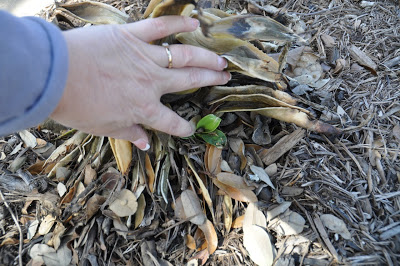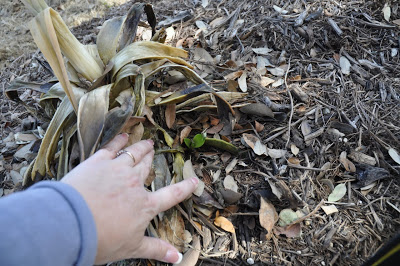Dead or Dormant?
Okay. So we’ve all been watching our gardens turn to mush and sticks and crackling paper. The colors du jour are brown and black and rotten. The kind of severe freeze damage we’ve had this winter has left us wondering what will live and what will die?
Is it dormant or is it dead?
We’re on the home stretch now – we only have a few more weeks with a danger of frost left. According to the USDA Hardiness Zone map for the Austin area, our average last frost occurs between March 1 and March 31. It’s typically the middle of March. I say the 15th, because I’m Type A and like my facts just so! (Mother Nature doesn’t always follow my rules, though – imagine that!)
So, it’s time to think about pruning.
First, assess the damage. If you scrape along the stem of most woody perennials you will be able to tell whether it is alive or not. Scratch and look for any signs of green. Normal pruning of most of our perennials will suffice if the plant is just dormant and not dead. Many of our woody plants like Lantanas and Tecoma Stans can be pruned entirely to the ground. Just make clean sharp cuts leaving about 6” of stem above the ground. If you want to leave some size and shape on the perennial, just prune back to healthy tissue. I will do that with my large Butterfly Bushes and my giant Duranta because I want to keep some of their size.
And don’t fertilize newly-pruned shrubs. They need to use all of their energy to begin new growth and fertilizing now will over-stress. Wait until later in the spring when they are established again.
But what do we do with succulents and agaves? Many of our aloes, agaves and their cousins just bit the dust in this freeze.
Ironic, isn’t it?
Like many Central Texas gardeners, I bought a lot of these plants to expand the drought tolerance palette of my garden in last summer’s scorching heat. Then this vicious and unusually-cold winter reduced many of them to pulp!
Freeze damaged succulents are usually a lighter color, almost white, soon after the freeze. Later, that part of the plant will wilt, and then turn black with rot. In some succulents, the affected part just eventually fall off. 
Even if you have rotten or dead leaves, if the bud is green and firm, the plant will likely to grow out and recover. And look closely before you start to dig — I was shocked to find two pups under this Agave desmettiana ‘variegata.’ I thought it was a goner for sure, but instead of losing one, I have just now found two new plants!
However, the parts that are damaged or dead never will recover, and here is the tricky part. For these types of plants, it is important to cut out only the dead parts, whether that is a whole leaf or only a part of one. It is a risk to prune living leaves on these kinds of plants because it invites infection, and when the plants are stressed out anyway, they are more susceptible to disease.
The same applies to palm trees: if the bud is fine and you see green in the center, the plant will probably live. Cut off dead or highly damaged leaves once it is warmer. Palms grow in the warm spring and through the summer, and may look much better by the end of the summer. Just give them time.
Cacti are very sensitive to pruning timing. While they may look really bad with their dying pads and stems, it is important to wait until it is really warm to prune them. Then dust the big cuts with sulfur to help dry out the cuts. Jointed cacti regenerate really well, but the columnar ones should to be cut back to the base or you will just end up with a permanent stump. If the plant is oozing, you can give it a quiet burial.
I’m off to do my assessment and start asking all my plants…
…”Are you dead or dormant?”
[/fusion_builder_column][/fusion_builder_row][/fusion_builder_container]


Leave A Comment